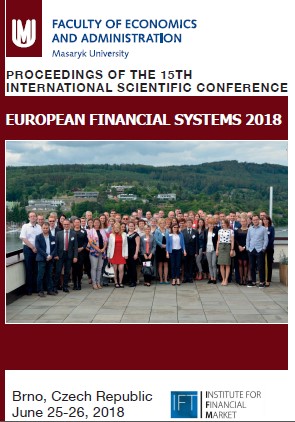Random Strategy Versus Technical Analysis Strategy: The Case of GBP/USD Intraday Trading
Random Strategy Versus Technical Analysis Strategy: The Case of GBP/USD Intraday Trading
Author(s): Miroslav Svoboda, Tomáš Plíhal, Pavel Sedláček
Subject(s): Economic policy, International relations/trade, Financial Markets
Published by: Masarykova univerzita nakladatelství
Keywords: technical analysis; investment decisions; foreign exchange markets; currency markets; random strategy; backtesting;
Summary/Abstract: This paper provides a comparison between the strategy based on technical analysis and the strategy based on random trading on a highly liquid GBP/USD foreign exchange market. We analyze six months of data, and in every intraday trading session, only a single position will be opened. Technical analysis strategy uses essential indicator relative strength index (RSI). Every trading position will have the risk-reward ratio (RRR) 3 to 1. In addition, another trading positions on the GBP/USD currency pair will be opened at the same time each day, without technical analysis. The time of entry into position will be indicated by past high liquidity on a given currency pair at a given time with a similar risk-reward-ratio (RRR) 3 to 1. We want to answer the question whether it is preferable to use the technical analysis indicators or to open a trading position randomly in intraday trading. In other words, this article aims to compare the strategy of technical analysis and the random strategy in intraday trading concerning the profitability of these trades. On the basis of our preliminary results, we expect that the random strategy will show us higher profitability or lower loss ability than the strategies based on the technical analysis indicators in the observed period.
Book: European Financial Systems 2018 - Proceedings of the 15th International Scientific Conference
- Page Range: 743-748
- Page Count: 6
- Publication Year: 2018
- Language: English
- Content File-PDF

